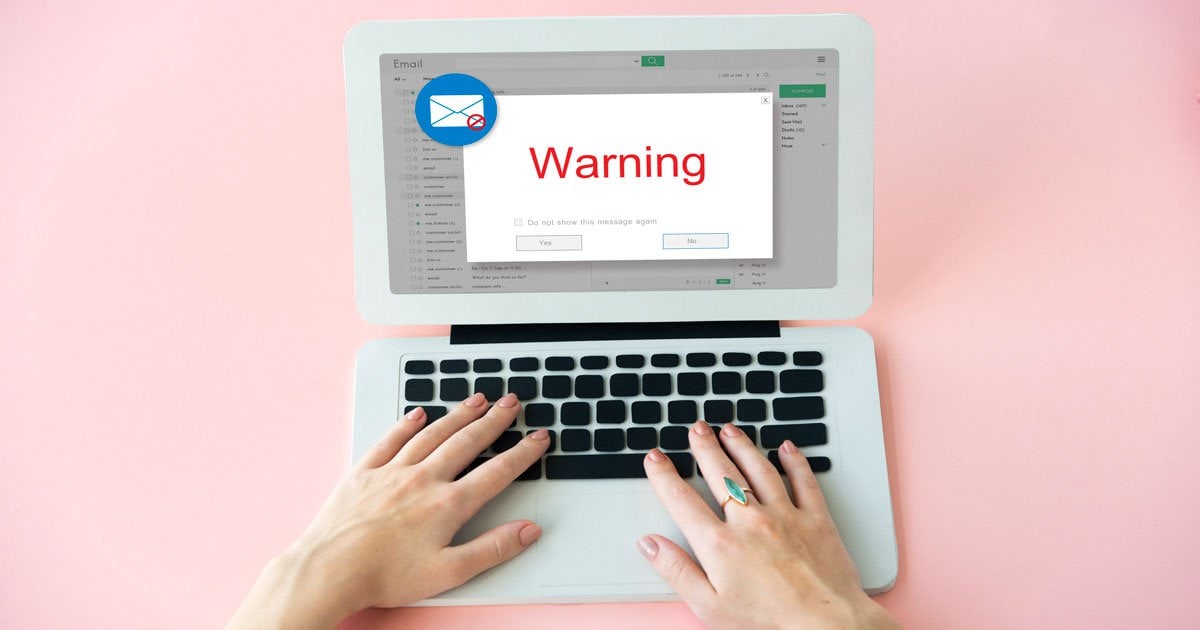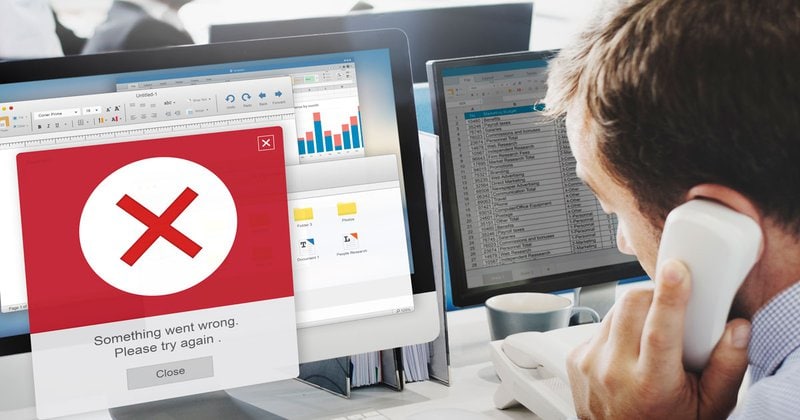
UCEPROTECTL2 blacklist can have a significant impact on your email deliverability. Learn how to check if you're listed and what steps you can take to get removed.
In the ever-evolving landscape of the internet, protecting our online assets has become paramount. From individual users to large organizations, safeguarding against cyber threats is crucial for a secure digital presence. One unique tool that has emerged in this endeavor is the UCEPROTECT2 blacklist. This powerful resource acts as a shield, identifying and blocking malicious entities. Ultimately, it fortifies our digital boundaries.
Today, we will delve into the intricacies of the UCEPROTECTL2 blacklist. We will actively investigate the cause of IP addresses getting blacklist by UCEPROTECT-Level 2 and actively gather relevant information on the matter.
UCEPROTECT Level 2 blacklist helps email service providers, servers, and users with email deliverability and security. It finds and lists IP addresses, email addresses, and domains involved in abusive or spammy behavior. This reliable blacklist reduces the risks of email abuse, ensuring good email delivery.
UCEPROTECTL2 carefully considers various factors to determine listings, with different levels indicating severity. However, it also allows delisting for entities that have improved or were mistakenly listed, following fair and transparent criteria.

If UCEPROTECTL2 blacklists your IP address, it indicates that your IP address has shown signs of abusive or spammy behavior. UCEPROTECTL2 actively lists IP addresses that engage in activities violating their guidelines through a rigorous process and criteria.
There can be several reasons why UCEPROTECTL2 blacklisted your IP address:
If you send a significant amount of unsolicited or unwanted emails, your IP address can get listed on the UCEPROTECT-Level 2 blacklist. This could be due to compromised accounts, poorly configured email servers, or intentional spamming.
UCEPROTECTL2 may blacklist IP addresses that are associated with malware infections or botnet activity. If your IP address has been participating in activities related to spreading viruses, and malware it can result in a listing. Another reason can be participating in botnet networks.
The UCEPROTECTL2 blacklist also considers IP ranges that have a history of poor reputation. Your IP address can be listed on the UCEPROTECT-Level 2 blacklist if you send a significant amount of unsolicited or unwanted emails.
Continuing the same behavior increases the likelihood of your IP address being blacklisted again, especially if it was previously listed on UCEPROTECTL2 or other similar blacklists.
UCEPROTECTL2 monitors spam traps (dummy email addresses used to catch spammers) and records spam complaints from recipients. Consistently associating your IP address with sending emails to spam traps or receiving complaints can contribute to blacklisting.
Misconfigured Mail Transfer Agent (MTA) can cause an increase in bounce messages and false positives, potentially leading to blacklisting.
However, using a warm-up tool can help prevent email blacklisting by gradually establishing a positive reputation. Start with a small volume of emails, focus on quality content, use opt-in subscribers, maintain consistent sending, monitor feedback loops, implement authentication protocols, and regularly analyze delivery metrics. And Warmbase can help you get that.
To request removal from the UCEPROTECTL2 blacklist and improve your email deliverability, follow these steps:
Investigate the reasons behind your IP address or domain being blacklisted. Assess your email server configurations, email practices, and overall email deliverability to pinpoint any potential issues that may have triggered the blacklisting.
Familiarize yourself with the delisting calculations and criteria set by UCEPROTECTL2. Ensure that you meet the requirements for delisting and address any specific criteria mentioned by UCEPROTECTL2 for removal.
UCEPROTECTL2 offers a delisting service to facilitate the removal process. Visit their website to access the delisting service and follow the provided instructions.
Utilize the delisting service to submit a formal removal request for your IP address or domain. Provide accurate and relevant information in your request, explaining the actions you have taken to resolve the issues that led to the blacklisting.
Follow the exact removal process outlined by UCEPROTECTL2. This may involve providing specific details, such as your IP blacklist removal instructions, any relevant evidence, or additional documentation requested.
Keep in mind that DNS propagation time is a crucial factor in the delisting process. Allow sufficient time (around 7 days) for the changes to propagate across DNS servers.
Seek help from email experts, service providers, or filtering services if needed. They can help with email issues and blacklisting concerns.
Consider UCEPROTECT-Level 2 for unresolved problems with your service provider. It reduces the impact of blacklisting and removes the listing if Level 1 events decrease below a threshold in 7 days.
Follow these guidelines to minimize the risk of getting UCEPROTECTL2 blacklist to improve your email deliverability.
Ensure proper configuration and updates for your email server. Regularly check for vulnerabilities and apply security patches to prevent abuse and unauthorized access.
Monitor your email sending patterns. Avoid sending a high volume of emails quickly to prevent spam suspicions. Gradually increase your email volume to maintain a good reputation and avoid flags.
Follow the best email practices, such as obtaining proper consent from recipients, providing clear opt-out options, and honoring unsubscribe requests promptly. This reduces the likelihood of complaints or spam reports.
Use email authentication protocols like SPF, DKIM, and DMARC to verify email authenticity and improve domain reputation.
Regularly monitor popular email blacklists, including UCEPROTECTL2. This will keep you informed about any potential listings. You can completely avoid listing incidents by resolving any problems that could result in blacklisting.
Take immediate action to investigate and resolve any abuse reports. Promptly handle complaints and address any underlying issues to maintain a clean email reputation and prevent escalation to blacklisting.
Continuously monitor the reputation of your IP addresses and domains. Utilize reputable IP and domain reputation monitoring services to proactively address any issues that may impact your email deliverability.
If you find yourself listed on the UCEPROTECTL2 blacklist, take immediate action by submitting a removal request through their designated delisting process. Provide all necessary information and evidence to support your request for removal. Monitor the progress and respond promptly to any requests for further information during the delisting process.
When nothing is actually wrong from your end, it can be confusing and frustrating to find out why your domain or IP address is on the UCEPROTECTL2 blacklist. That is why we will share the top 5 facts about the UCEPROTECTL2 blacklist.
Learning these 5 facts will help you can remain better protected and eventually improve your email delivery.
If your IP addresses are listed on the UCEPROTECTL2 blacklist, it means that your entire range of IP addresses is affected. This can significantly impact your email deliverability and may require comprehensive actions to address the issue across all your email addresses.
UCEPROTECTL2 blacklist does not directly affect the accessibility of your inbox. However, it can impact your email deliverability to recipients using email service providers or spam filters that reference the UCEPROTECTL2 blacklist. To ensure your emails land in the inbox, it is crucial to address blacklisting issues promptly.
As a listed entity on UCEPROTECTL2, your hosting provider or email service provider has the authority to initiate the delisting process. Reach out to your host for assistance in requesting removal from the blacklist. They can guide you through the necessary steps and provide the delisting service.
Running deliverability tests is crucial to assess the impact of being listed on UCEPROTECT-Level 2 and other blacklists. These tests actively evaluate how different email service providers and spam filters receive and filter your emails. By analyzing the results, you can identify areas for improvement and take necessary actions to enhance your email deliverability.
To better understand the effectiveness of your email campaigns and monitor your email deliverability, consider utilizing an email warmup tool like Warmbase. This tool provides insights into inbox placement rates, engagement metrics, and domain reputation. Track the impact of being listed on UCEPROTECTL2 and improve email performance by actively monitoring these metrics.
As our dependence on the digital realm continues to grow, so does the need for robust security measures. The UCEPROTECT Level 2 (UCEPROTECTL2) blacklist emerges as a stalwart defender against the ever-present threat of cybercrime.
UCEPROTECTL2 proactively guards against spam, viruses, and other nefarious activities. This is how it offers peace of mind, ensuring that our online presence remains protected and our systems are shielded from potential harm. By leveraging the power of the UCEPROTECTL2 blacklist, we can navigate the ever-expanding virtual realm for sure.
To clean an IP blacklist listed on UCEPROTECTL2 and UCEPROTECTL3, you should identify the reason for the blacklisting first. Then, try to address the underlying issues. After that, contact UCEPROTECTL2 and UCEPROTECTL3 to request removal from their blacklists.
Thankfully, you don't need to seek consultation or support as blacklisted IP addresses get automatically removed after 7 days of spam detection.
Blacklist IP details typically include information such as the blacklisted IP address, the date of listing, the reason for the listing, and any additional details or comments provided by the blacklist service. One can identify the specific issues associated with the IP address with these details.
Yes, it is undesirable if your IP address is blacklisted. Blacklisting can negatively impact your email deliverability. Your emails can be marked as spam or rejected. This will decrease the effectiveness of communication and lead to poor inbox placement.
A "blacklist virus" is not commonly recognized, but it may refer to a computer virus or malware actively engaging in malicious activities, such as spamming, phishing, or other forms of abuse that can result in the blacklisting of IP addresses.
Microsoft does not openly disclose its specific usage of UCEPROTECTL2 or UCEPROTECTL3. However, Microsoft's email services, such as Outlook.com and Exchange Online, implement their own internal spam filtering and blacklisting mechanisms to protect their users from spam or abusive emails. These mechanisms may include various factors, including but not limited to UCEPROTECTL2 or UCEPROTECTL3 blacklists.
